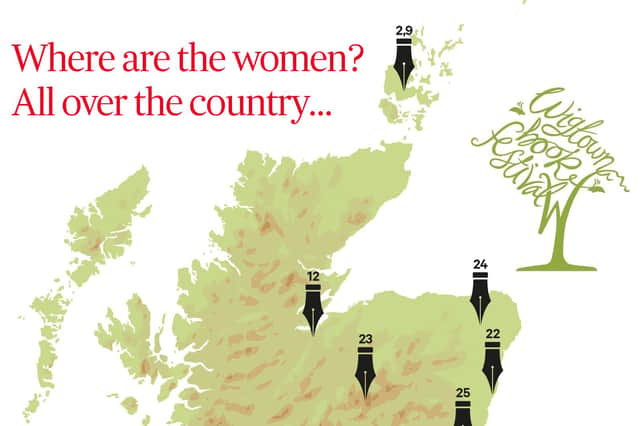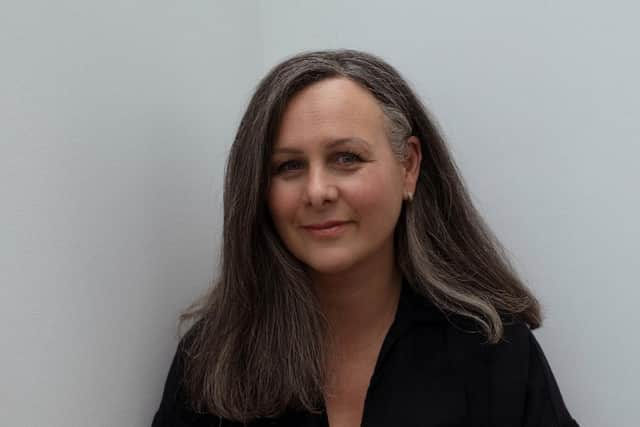International Women's Day: Where are the Writing Women? - Sara Sheridan


I was already an activist when the book was commissioned but by the time I had finished it I had been radicalised. The way we memorialise our history is key. As George Orwell noted in 1984, ‘He who controls the past, controls the future’. HE. I had known some of the lost stories of our foremothers, for many years but compiling them was straightening. There were just so many and as my research went on, I realised that the impact the deficit in our built heritage had upon women’s conception of their prospects was huge. In Naomi Alderman’s science fiction novel The Power, which won the Baileys Prize in 2017, Alderman she imagines a world 5,000 years in the future, where women’s power is normalised. In this world, evolutionary biology allows society to misread history and show that men are weak. One character – a man – tries to push against this, arguing that history was written by women who chose stories that were more favourable to them. ‘They picked works to copy that supported their viewpoint ... I mean, why would they recopy works that said that men used to be stronger and women weaker? That would be heresy, and they’d be damned for it.’ Exactly, I thought. as I read Alderman’s words. I kept imagining me, as a child, walking along George Street in Edinburgh where I grew up, passing statue after statue of big, brass men. My brothers making the same journey must have felt that the world was open to their achievement. I certainly did not.
In 2017 crime writer Val McDermid created Message from the Skies as part of a programme of events to celebrate Edinburgh’s Hogmanay. This was an interactive trail highlighting Edinburgh’s female literary history including the novelist Susan Ferrier, whose talent Sir Walter Scott claimed surpassed his own; author D E Stevenson, cousin of the repeatedly commemorated Robert Louis Stevenson (whom she outsold in her day); and internationally renowned writer Muriel Spark, whose collected works had just been republished to mark the centenary of her birth in 1918. I was shaken that I had never heard of Susan Ferrier or Dorothy Stevenson – such landmark Scottish writers. The project provoked a similar response from many of the people who followed the trail. But how could we have known the stories of these women so if they aren’t commemorated? Existing monuments to named women numbered at the time a mere five statues in the whole of Glasgow (now seven) and three in Edinburgh. (still three, I’m afraid).
Advertisement
Hide AdAdvertisement
Hide AdWhat really hit home for me is that Scottish writers like Val herself, like me, like many of my writing friends, still stand to be forgotten. When I was writing Where are the Women I dedicated imaginary steps on library staircases, bells, giant books, lights in the sky, book festivals, benches and parks to the memory of female writers past. I discovered a breadth of talent and achievement that astounded me – women who had won prizes, hobnobbed with the literati of their era and many who had achieved huge commercial success. They wrote, of course, in Scots, in Gaelic and in English. After I had delivered my manuscript I went on a reading spree that genuinely delighted me discovering voices that resonated across centuries. In Where are the Women? as well as writers, I commemorated scientists, soldiers, artists, politicians, campaigners – people across the whole of society. The book contains 1,200 imagined monuments and honestly, I could have included 1,200 more. Likewise this map gives only a flavour of our female, literary heritage but choosing only 25 women to include has meant many of our talented, eloquent foremothers have not found a place here. Could you suggest other favourites? Use the map to venture into a more diverse literary heritage than we’re presented with on school and college reading lists or in traditional white, male, heteronormative histories of our cultural heritage.


Welcome to the world of our mothers, grandmothers, great grandmothers and back on into history, our hands holding theirs. We are where we have come from and these women wrote about that exciting, frustrating, fascinating place.
Comments
Want to join the conversation? Please or to comment on this article.